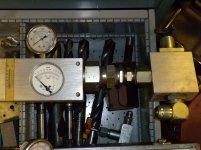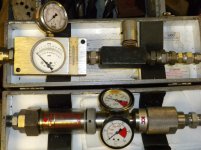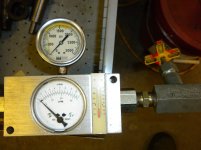If we are assuming pressure will be the same, flow would have to decrease cause restriction would either have to cause a pressure increase to get through the same amount of flow to do the same amount of work.
That is all correct!! But in my example flow cant decrease....it is "fixed", so increased pressure is what it takes.....
I will make an analogy for you.....you are pushing your car on the pavement.....not very hard to do.....car rolls into deep loose gravel....what does it take to keep pushing with the same speed (fixed pump flow)??.......just push harder !!! Higher pressure is what it will take to push fluid through a decreased orifice (restriction)....
Constant flow systems have variable pressure to regulate/control out put power...
Constant pressure systems (like the water supply to our garden hose), have constant pressure and variable flow to regulate/control the out put power
(A load sensing system can vary both flow and pressure to regulate/control out put power)
When the PRV, in the constant flow system, start by-passing/diverting flow, a constant flow system will start acting like a constant pressure system, and it will be possible the decrease flow with a restriction/orifice...
Of course in reality, there is internal leakage in pumps, valves seals etc....that will divert some smaller amount of flow, if a restriction increases pressure. Prime mover might also bog down a few rpm's from pressure load....but over all... in constant flow systems, my point is still, that it is not accurate to say flow increases if we use larger fittings, hoses etc....but we will indeed increase supply pressure, to keep flow constant....
There is a common misunderstanding that a hydraulic flow, at any time, can be varied with a variable restriction/orifice....that can actually only happen when part of flow can be diverted.....(internal leakage, PRV by-pass etc
The diverted flow by the pressure is all entirely a power loss.




